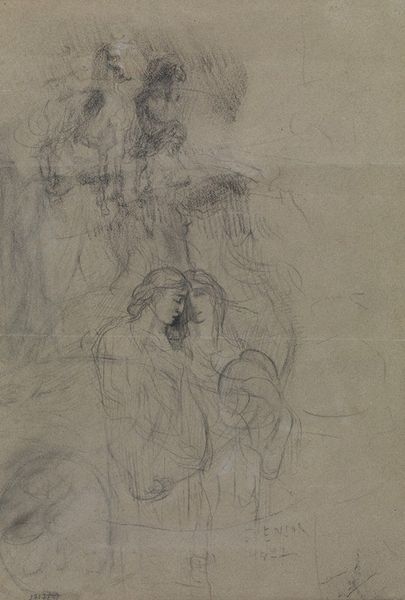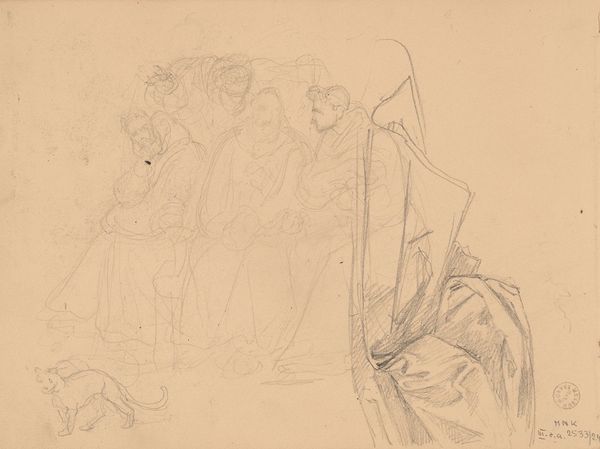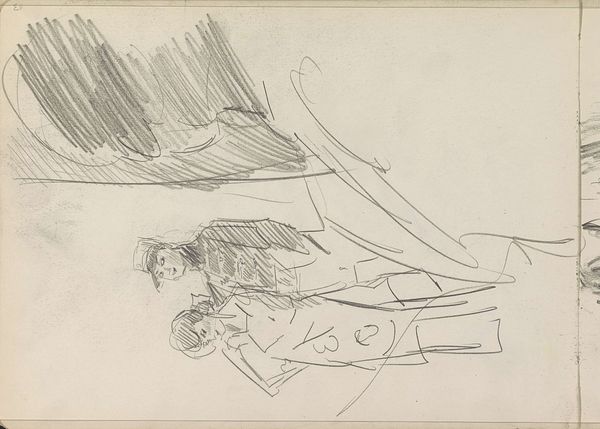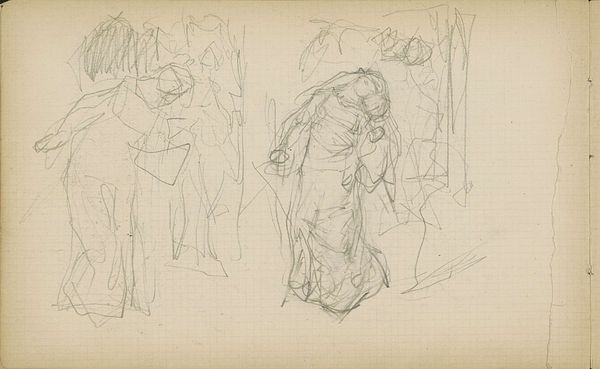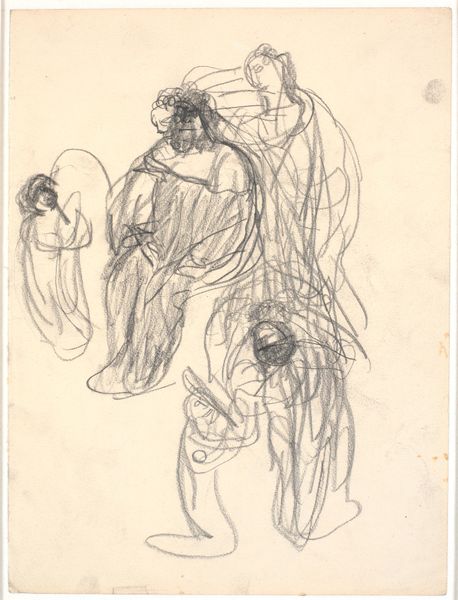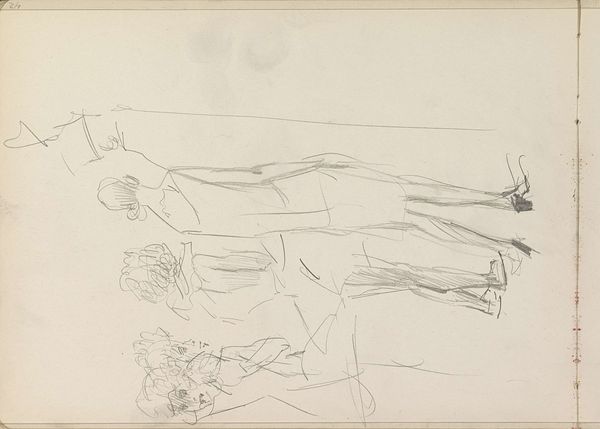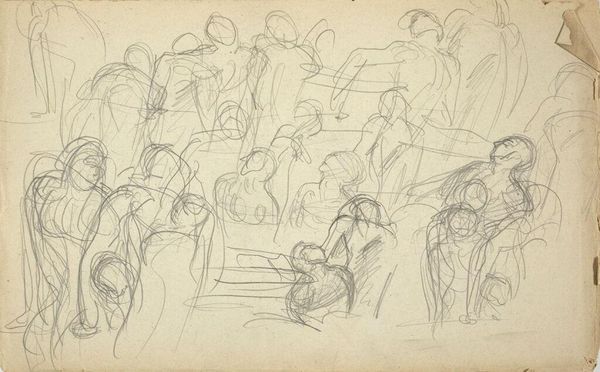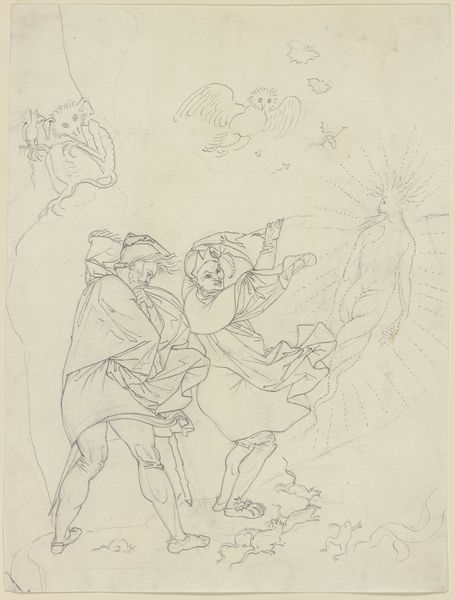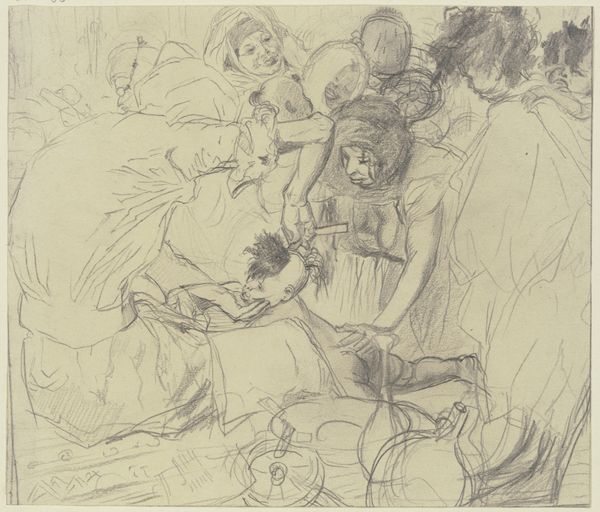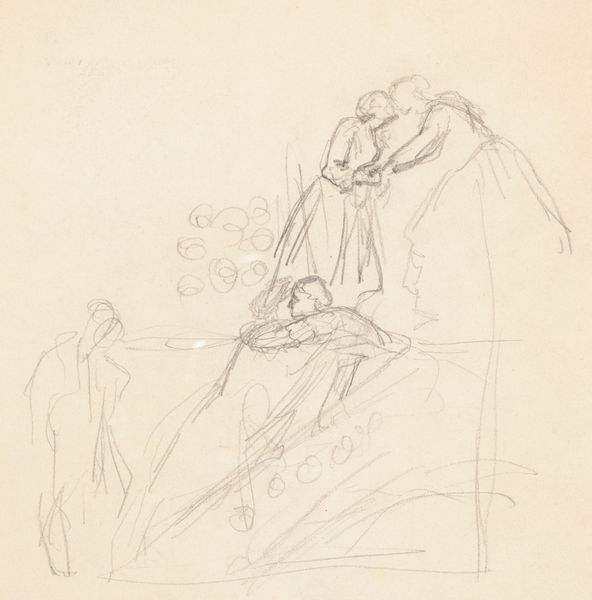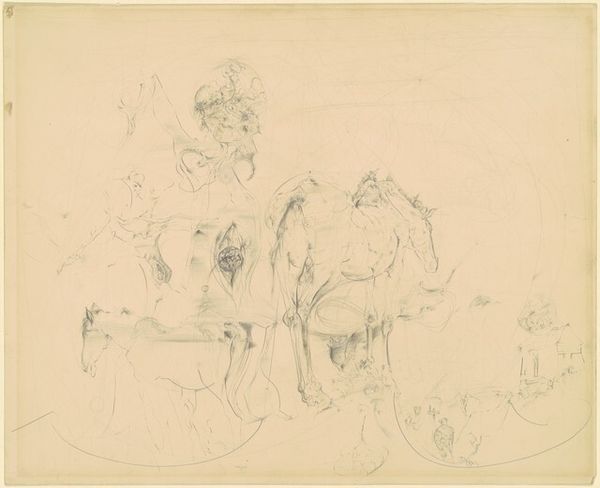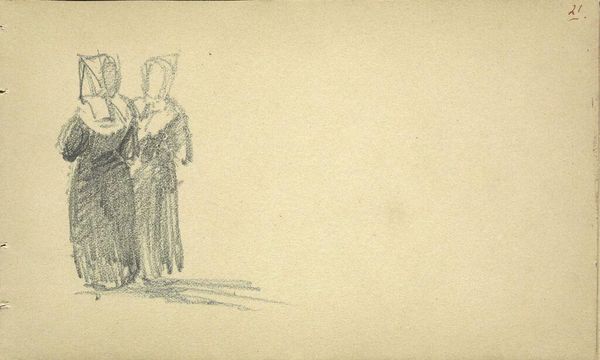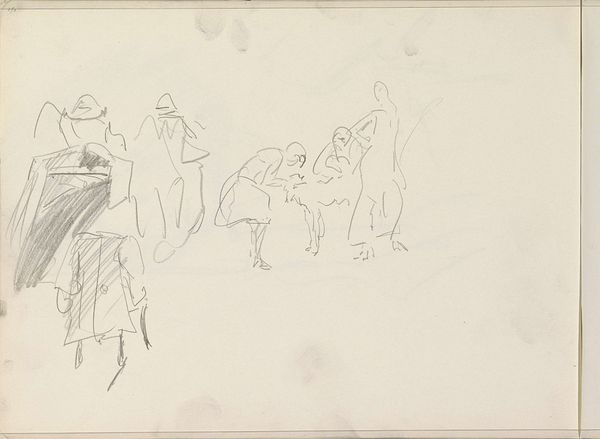
drawing, pencil
#
portrait
#
drawing
#
impressionism
#
figuration
#
pencil
#
line
#
genre-painting
Copyright: Public domain
Curator: We are looking at Thèophile Alexandre Steinlen’s drawing "Jeux Innocents." It's rendered in pencil, depicting what appears to be a scene of children at play. What is your initial impression? Editor: There’s a lightness to it; the minimal use of line lends an ephemeral quality. It's as though the scene might vanish if you look away too long. Curator: Indeed. Steinlen was deeply interested in depicting everyday life, particularly the lives of the working class in Paris. This drawing offers a glimpse into their recreational activities, likely capturing a moment of leisure for these children. Notice the hoop on the left, a simple toy indicative of the time. Editor: I’m intrigued by the way the composition leads the eye. The grouping of the children in the foreground and the almost ghost-like figures blurred in the background. It creates depth without relying on stark contrasts or traditional shading techniques. The ethereal composition of a larger societal context. Curator: Precisely, Steinlen often critiqued social issues in his art, and though subtle here, the grouping can also signify communal support systems necessary for survival. Also the style is key to understanding the work. It reflects the wider availability and distribution of drawings in that period. Pencil, while easily accessible, connects his more overtly political works, often reproduced in print media, with this more ostensibly simple subject matter. Editor: Looking closely, there's an incredible economy of line; he captures the essence of form with remarkable efficiency, and the strategic use of hatching adds a sense of volume. Notice that the figures seem simultaneously solid and translucent. Curator: The open, airy quality enhances the depiction of youth and energy of the working class; but also indicates that access to certain materials and modes of life was easier and expanding for them during the modern era. Editor: It does invite consideration beyond just aesthetics. It asks us to look deeper into society and how art responds. Curator: It’s a dance between form and substance. What at first appears as a candid depiction opens up, on closer inspection, a commentary about labor, leisure, and class in late 19th-century France. Editor: The image will keep offering layered meaning each time we return to consider it.
Comments
No comments
Be the first to comment and join the conversation on the ultimate creative platform.
